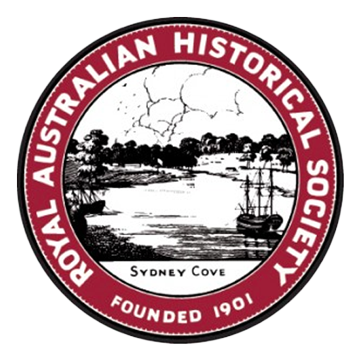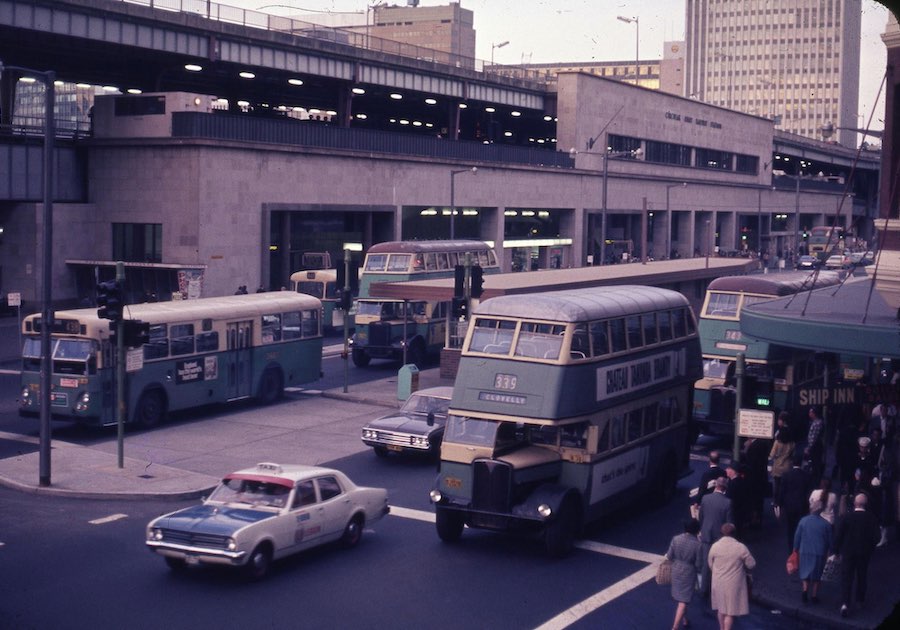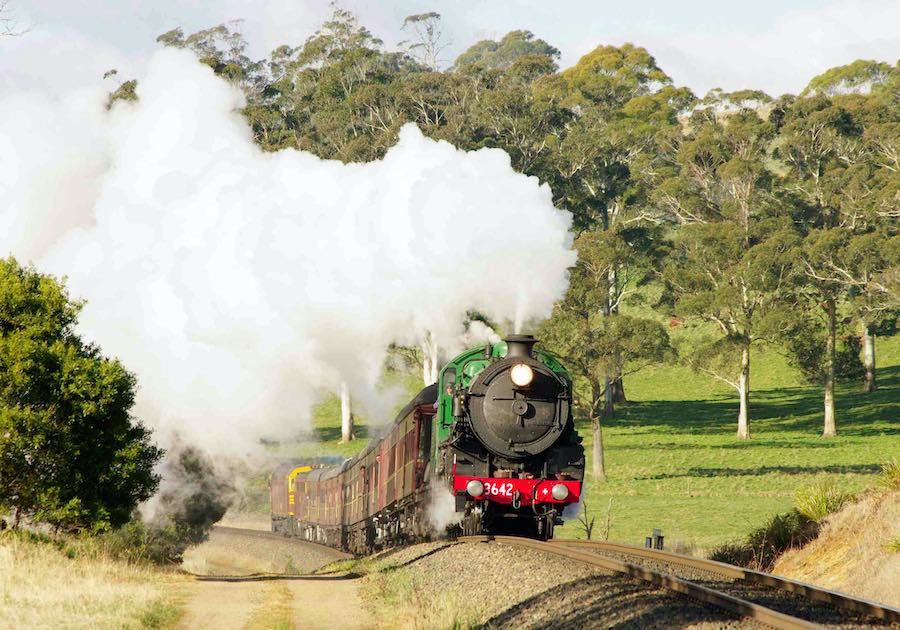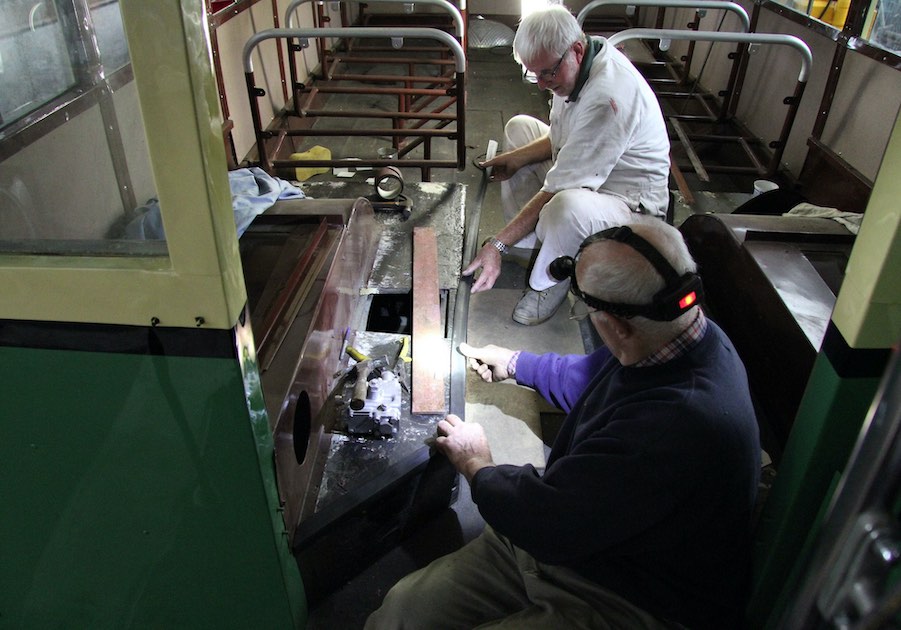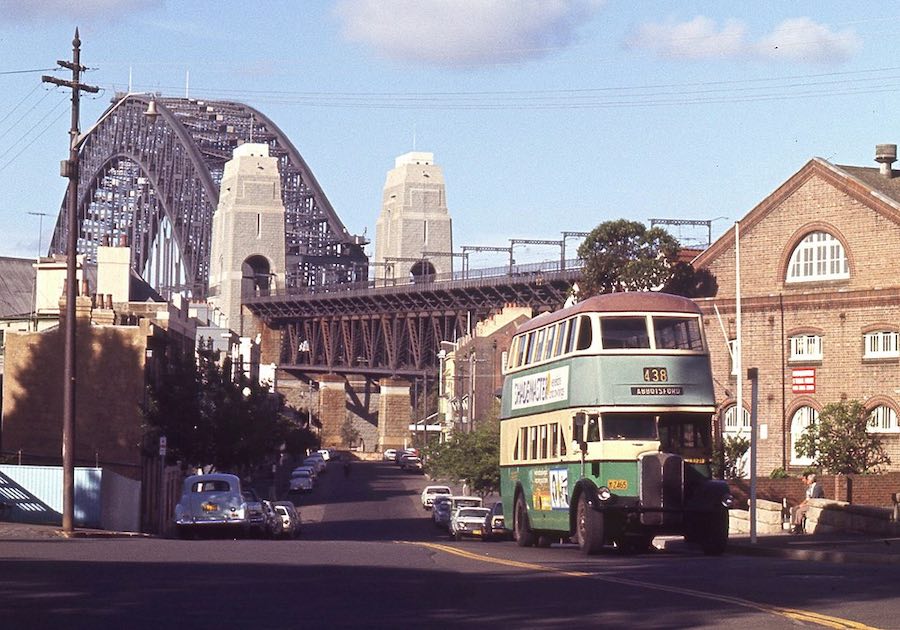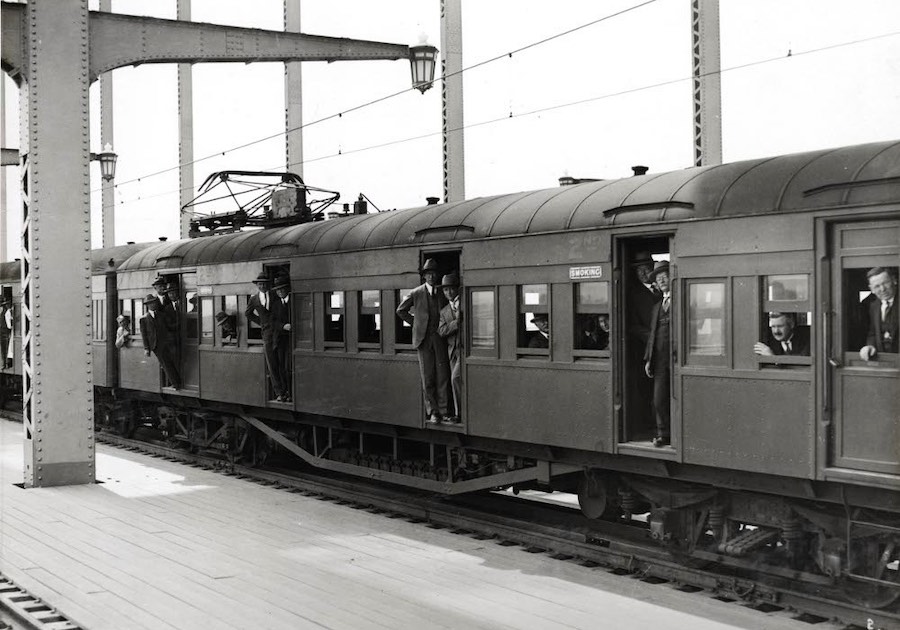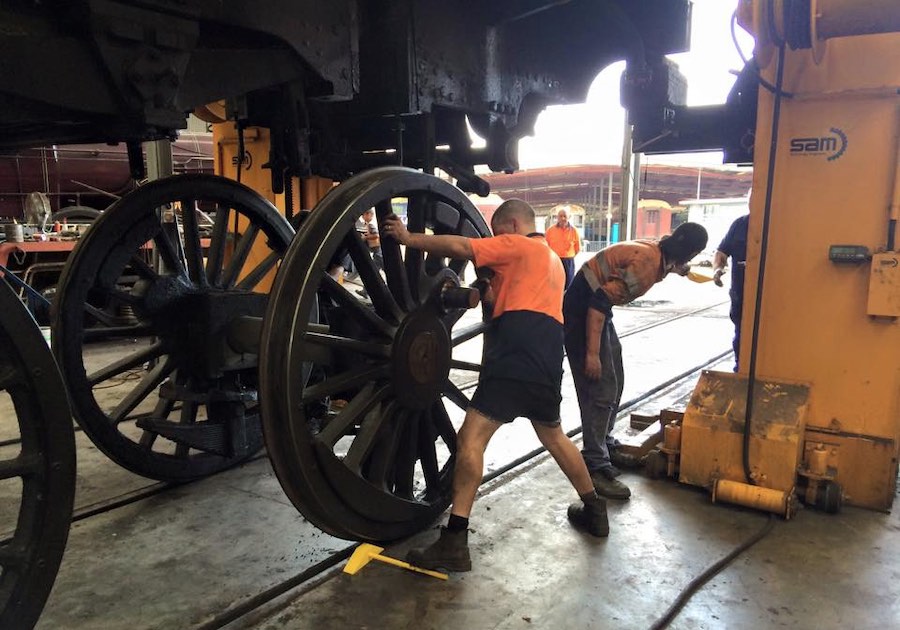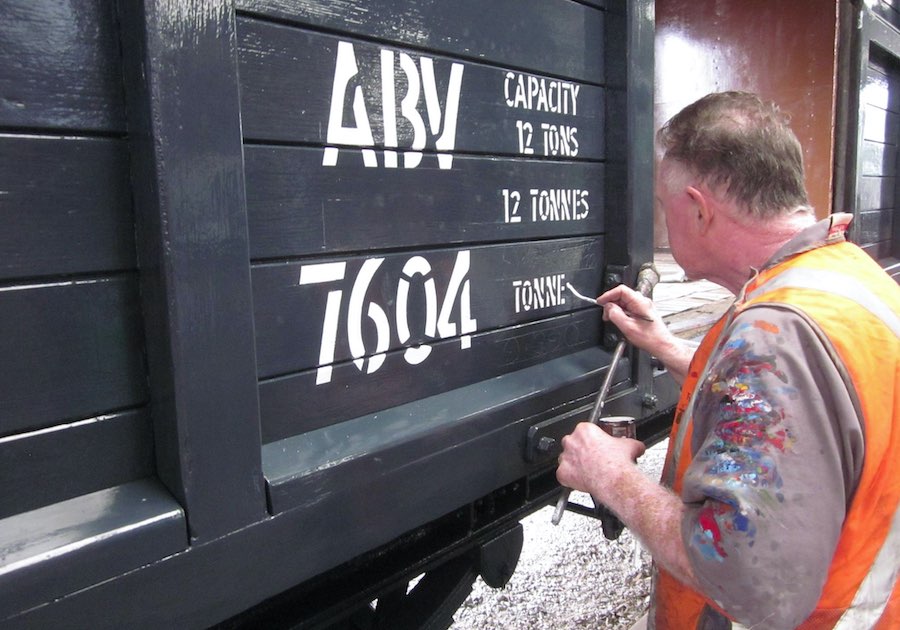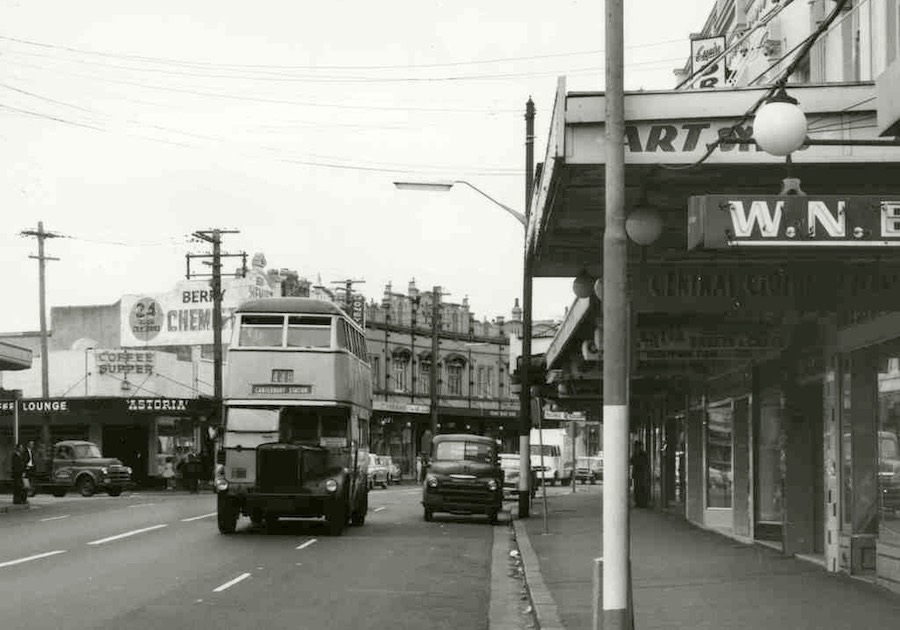Transport Heritage Grants Program
The Transport Heritage Grants Program (the Program) is a NSW Government funded program, administered by the Royal Australian Historical Society (RAHS), and supported by Transport Heritage NSW (THNSW).
The purpose of this website is to assist prospective grant applicants in understanding the scope of the Program, the requirements in submitting a grant application, and recipient responsibilities.
The 2025 Transport Heritage Grants Program opens on 5 June and will close on 1 August at 5 pm.
For any enquires please email grants@rahs.org.au
Your Title Goes Here
Eligibility
Depending on the type of project (see section 5), the following are eligible to apply for grants:
Organisations: NSW or ACT based bodies corporate that are not-for-profit or charitable institutions with transport heritage and/or NSW heritage or history as their primary objective and purpose;
Individuals: Members of Transport Heritage NSW. If applying for funds in the Restoration, reconstruction or preservation; Exhibition, interpretation, education or publication; or Audience development, accessibility and inclusion categories, individuals must apply in partnership with an eligible organisation.
Project Categories
Category 1: Restoration, reconstruction or preservation of a heritage transport item (available for eligible organisations only)
This category comprises projects which directly involve the restoration and/or conservation of transport heritage assets (including buildings, rolling stock, vehicles, museum objects and collections) which are not eligible for other Government funding administered by THNSW.
- Priority will be given to projects involving assets with strong and significant links to the transport history of NSW.
- All necessary approvals to conduct the works must be acquired prior to submitting the application and relevant evidence provided.
- If the project relates to a heritage asset owned by the applicant, proof of ownership must be provided with the application.
- If the project relates to a heritage asset not owned by the applicant, it must be owned by a not-for-profit incorporated body or Government body.
- If the project relates to a heritage asset not owned by the applicant, the applicant must include evidence of approval from the owner to conduct works in line with that agreement.
- If the project relates to an operational asset, evidence of accreditation by the relevant regulator (e.g. National Rail Safety Regulator) must be provided.
Category 2: Exhibition, interpretation, education or publication relating to heritage transport (available for eligible organisations only)
This category comprises projects that involve educating the community about NSW transport heritage or the operation of transport heritage passenger services. Examples include:
- museum exhibitions
- public programs
- education programs
- in vehicle commentary.
Education programs must be developed in conjunction with education professionals, a letter of support from a local school and contribute to the curriculum.
Category 3: Study, consultation, report or review that will assist in managing a heritage transport place or item in NSW or the ACT (available for eligible organisations and individuals)
This category comprises conservation management plans, statements of significance and heritage management plans.
Category 4: Audience development, accessibility, and inclusion
This category is for projects whose outcomes improve access to NSW transport heritage. Examples include:
- Temporary and/or permanent infrastructure, and/or building, precinct and asset works that will improve accessibility and inclusion for diverse audiences
- Equipment that improves experience and access
- Signage, guide and interpretative material for diverse audiences
- Access supports and programming
- Accessible online content.
Application Process, Guidelines and Forms
The RAHS must receive completed application forms and supporting documentation by the deadline. All applicants will be emailed confirmation of receipt of their application by the RAHS.
If you need help downloading the forms, they can also be emailed or posted to you by contacting the RAHS at (02) 9247 8001.
Applicants are encouraged to submit applications by email. Applicants submitting electronic applications must ensure that signatures are in place on the application. An email will be sent to acknowledge that the application has been received.
If you wish to post your application, please send it to NSW Transport Heritage Grants Coordinator, Royal Australian Historical Society, 133 Macquarie Street, Sydney NSW 2000
The RAHS will disclose the information in your application to Transport for NSW so that your application can be assessed and your grant, if you are successful, recognised.
It is essential to answer all questions. Incomplete applications will not be assessed. If you have an issue downloading the form, please contact the RAHS.
Applicants must read the detailed guidelines before applying to ensure their project is eligible for funding. Before starting your application form, we recommend discussing your project with RAHS Grants Officer Maryanne Byrne or RAHS General Manager Suzanne Holohan to ensure it meets the eligibility criteria. If you have any queries, please email or call us on (02) 9247 8001.
Assessment Process
Applications will be assessed by a preliminary review working group, and grants will be approved by the Independent Funding and Advisory Panel (IFAP).
Each project application will be evaluated on its merits against the following selection criteria:
- The project’s transport heritage significance.
- The project’s quality, including its aims, content, rationale and likely benefit.
- The project’s relevance and usefulness to its target audience and the community more generally.
- The project’s viability, including planning, availability of resources, sustainable governance, financial planning and administration.
- Sustainability of the applicant, including capability and capacity to deliver the project (evidence of past project delivery success).
- Consideration of community participation and engagement with the project.
Information about the status of applications will be released once all applications have been assessed and final decisions are reached.
Understanding Heritage Significance
One of the key grant selection criterion is the project’s transport heritage significance. Therefore, all applicants must understand what ‘significance’ means in a heritage context so they can answer the following questions. The definitions, examples and useful links on this page aim to help applicants answer the following key questions:
- All Categories – In no more than 500 words, please outline the transport heritage significance of the project;
- Restoration and Conservation Category only – Please describe the heritage significance of the asset/s.
What does ‘significance’ mean?
In 2009, the Collection Council of Australia published Significance 2.0 – a guide to assessing the significance of collections. This document provided a definition of significance that is now commonly accepted by heritage and collection management professionals.
‘Significance’ refers to the values and meanings that items and collections have for people and communities. At a simple level, significance is a way of telling compelling stories about items and collections, explaining why they are important. Significance may also be defined as the historic, artistic, scientific and social or spiritual values that items and collections have for past, present and future generations.
Project’s heritage significance – some things to consider:
Some questions that applicants may find helpful to consider when describing the heritage significance of their project are:
- Is your project associated with a particular person, group, event, place or activity, and how is this important?
- What does your project say about a historic theme, process, or pattern of life?
- How does your project contribute to understanding a period, place, activity, industry, person or event?
Statements of heritage significance for assets
Applicants applying for Restoration and Conservation grants will need to assess the heritage significance of the asset. The main aim of assessing significance is to produce a succinct statement of significance, summarising an item’s heritage values.
The NSW Office of Environment and Heritage has established several criteria that are used to assess whether an item has heritage significance:
- An item is important in the course, or pattern, of NSW’s cultural or natural history (or the cultural or natural history of the local area);
- An item has strong or special association with the life or works of a person, or group of persons, of importance in NSW’s cultural or natural history (or the cultural or natural history of the local area);
- An item is important in demonstrating aesthetic characteristics and/or a high degree of creative or technical achievement in NSW (or the local area);
- An item has strong or special association with a particular community or cultural group in NSW (or the local area) for social, cultural or spiritual reasons;
- An item has potential to yield information that will contribute to an understanding of NSW’s cultural or natural history (or the cultural or natural history of the local area);
- An item possesses uncommon, rare or endangered aspects of NSW’s cultural or natural history (or the cultural or natural history of the local area);
- An item is important in demonstrating the principal characteristics of a class of NSW’s cultural or natural places.
Assessing Heritage Significance, prepared by the NSW Office of Environment and Heritage, contains samples of heritage significance statements for each of the different types of criterion.
Past Recipients
The recipients of the Transport Heritage Grants are announced at the Transport Heritage NSW Conferences.
Frequently Asked Questions
1.0 Eligibility
Question: Can an organisation submit more than one grant application?
Yes. If you are applying for multiple projects, then things to consider are:
- Capacity of your organisation to deliver multiple projects on time and within budget;
- If applicable, highlight any linkages between projects. Please note that you must be able to complete each individual project on a standalone basis.
Question: Are joint applications acceptable?
Yes. For example, a rail heritage organisation and a local library/historical society/heritage organisation may choose to submit an Education Interpretation project.
2.0 Types of Projects
Question: Is funding available to publish books connected to rail heritage if the research and writing are complete?
Yes. Funding is available for this type of project. The project plan should focus on how it contributes to understanding transport heritage, the audience/potential readership of the publication and details of the publication type (e.g. printed/eBook/hardback, proposed chapters, sources).
Question: Would the following conservation and restoration projects be considered: retention toilets for heritage trains; tool costs to maintain heritage machinery; repairs to steam boilers?
All these projects would be eligible. Please note the following:
- Applications that involve the purchases of tools to maintain machinery should specify the benefits of ownership and care/custodianship of these items;
- Applications that focus on safety/improving service to the public must show how this benefits transport heritage, e.g. asset sustainability, increased public access and enjoyment;
- Applications for urgent repairs should address the impact this work has on the heritage of the asset and demonstrate an understanding of the Burra Charter (or equivalent). Download a copy of the Burra Charter from the Australia ICOMOS website.
Question: Would a reprint of an existing publication be considered suitable for a grant?
This would only be considered if:
- The original publication has historic merit for reproduction;
- Additional research material of historical and heritage significance was added to the original work.
3.0 Selection Criteria
Question: How do applications for producing publication meet the selection criteria ‘community participation and engagement with project’?
The following is a list of examples of how an application to produce a publication may meet this requirement. Please contact the RAHS if you require further clarification:
- Sourcing historical records from local groups;
- Collating oral histories to supplement archival research;
- Including in the application the audiences for print interpretation and how they will access materials;
- Including in the application publicity plans as to how you will share the project outputs with the public.

Image Slideshow
Click on the images below to open a larger view and to read the captions.
